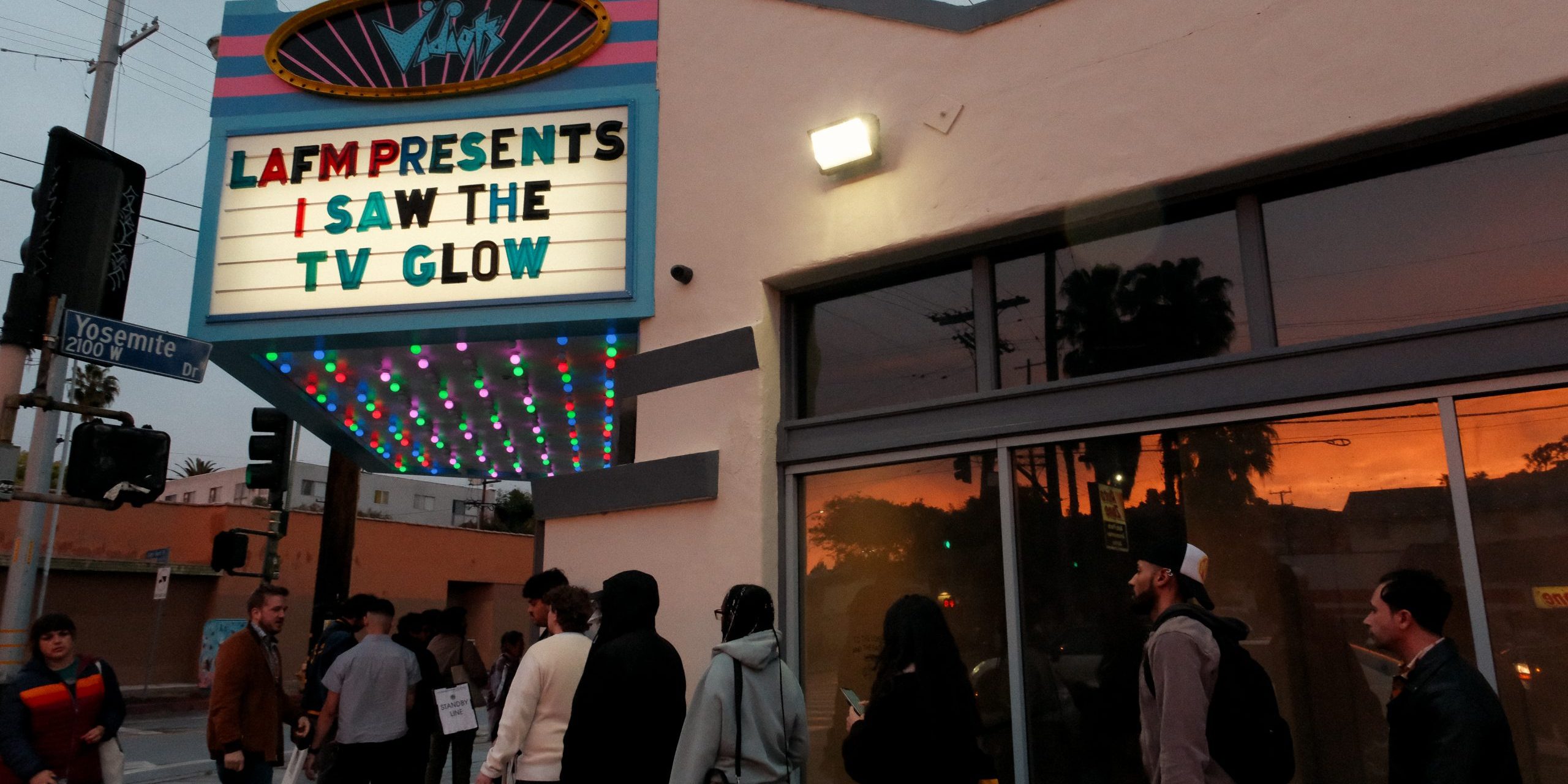There are two kinds of film festivals out there. In one camp there is Cannes, Toronto, Venice, and Berlin. These are largely corporate sponsored galas—competitions even—where the aim is for Hollywood studios or multinational financiers to gain clout and distribution. They give out gold stars like the Palm d’Or and the Golden Bear. It’s not unusual to see someone like Steven Spielberg walk down the red carpet, surrounded by state of the art cameras, in an expensive tux. They’re made out to be a big deal all around the world, which is unfortunate because these events, equivalent to old-time society balls, gate-keep the narratives that are circulated in the cultural consciousness on a year to year basis.
Over the last few decades, another sort of film festival has taken off. This is of a more regional flavor which shuns the typical hoopla like awards and glamor. The focus here is on meaningful initiatives like artistic integrity, diversity in representation, and community-building. I’ve personally witnessed these in the States, where cities like Miami and Philadelphia host Third Horizon and Blackstar film festivals. In both, there is an unmatched synergy. Independent filmmakers, and I mean truly independent DIY miracle workers, get to tell their stories where the seats are filled with passionate moviegoers. This audience isn’t made up of multimillionaire celebrities in Prada, but students and baristas in Crocs bedazzled with charms.
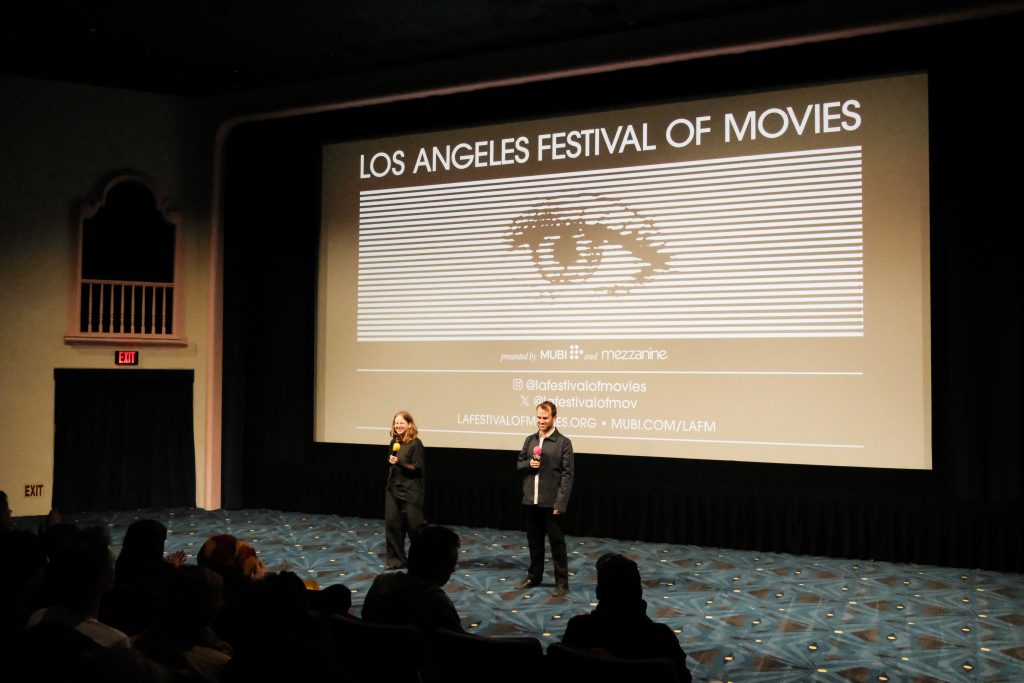
Early April has the promise of spring, especially after an exceptionally cold and rainy winter, and like the local cherry blossoms it introduced with a burst of glee the inaugural Los Angeles Festival of Movies. Presented by the interdisciplinary platform MUBI—an internationally recognized company known equally for streaming, distribution, production, and film criticism—along with Mezzanine, a local non-profit which curates art movie screenings, the four-day event was a true celebration of cinema. By cinema, I do mean cinema as films in general, but mostly I want to embrace cinema as the space where people from all walks of life gather to experience something singular, expressive, and immersive. It’s a rarified phenomenon, kind of like a shared dream, after which we wake up a little bit transformed.
While the Los Angeles Festival of Movies was not particularly regional in content, it was quintessentially Angeleno in spirit. For starters, screenings were hosted in three distinct locations: 2220 Arts + Archives in Historic Filipinotown, Now Instant Image Hall in Chinatown, and Vidiots in Eagle Rock. All alternative spaces which, I imagine, would not thrive in any other city in America. In addition to the films, there were talks organized where Los Angeles-based filmmakers, writers, and musicians discussed the relationships between the city, the movies, and their own art. Most of all, the audience who gathered for the various shows and events were from every corner of the county. Whenever one person ran into someone familiar, they greeted each other by relating the conditions on the 10, the 110, or the 101. There’s something endearing when these major arterial roadways connect at a single point around the center of Los Angeles. It’s evidence of a heartbeat that keeps this sprawling metropolis alive.
The four days of the festival were busy and memorable. Below are a few highlights to provide a glimpse into a little bit of what the Los Angeles Festival of Movies offers.
Gasoline Rainbow (Bill Ross IV and Turner Ross, 2023)
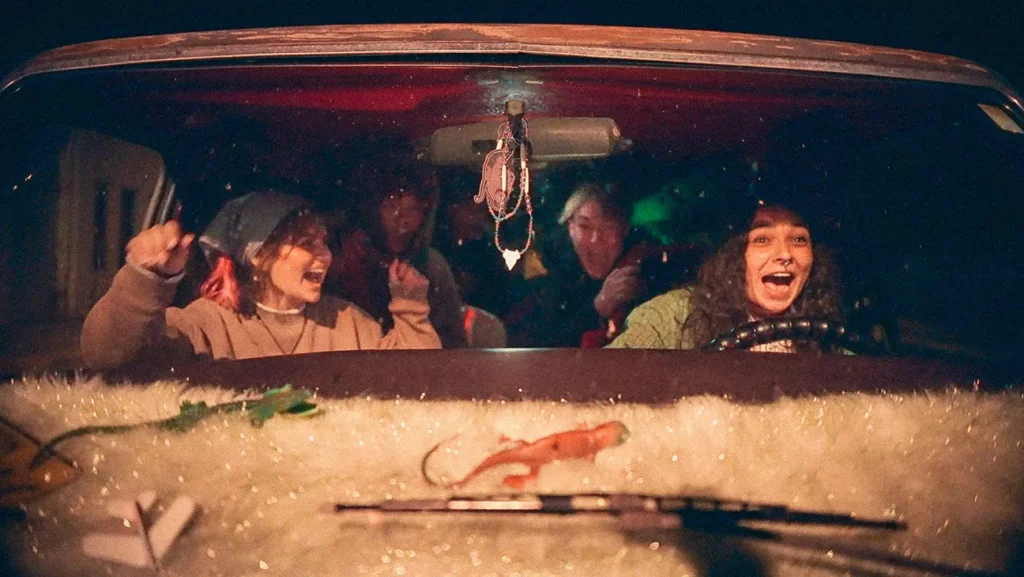
Gasoline Rainbow is a vérité road movie, a great and sprawling American narrative in the kinetic style of Jack Kerouac’s On the Road. It features five teenagers, recent high school graduates, from a nowhere town in rural Oregon who borrow a van, with little money but a lot of pot, and look to drive it across the state to reach the coast. The trip is meant to be something of a last hurrah to experience youth in its most free-wheeling expression, but soon turns into a moment of harsh transition. Along the way, things go haywire where the kids struggle to move. At the same time, they find further motivation in a get-together on the coast that’s appropriately titled “The Party at the End of the World.” As the journey begins to develop toward a climax that promises an event that’s both Dionysian and apocalyptic, tragic overtones begin to surface. The movie seamlessly and tenderly exposes the national scars of addiction, housing insecurity, hyper-policing, and racism in a picaresque tale. By the end, the five kids arrive at the end of the world by testing the limits of their bodies and their collective experience, to learn that a new, uncertain world is about to open up before them. More than anything, Gasoline Rainbow is a haunting document of a time where America’s systemic failures have eroded all innocence, where preserving youth has become a death-defying act of resistance.
Un rêve plus long que la nuit (Niki de Saint Phalle, 1976)
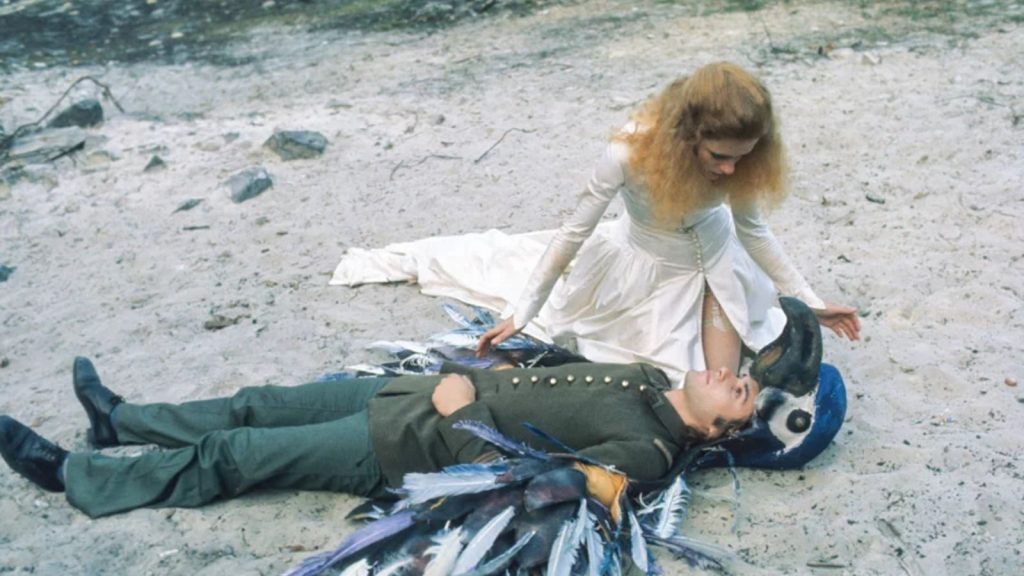
Un rêve plus long que la nuit, made by the interdisciplinary artist Niki de Saint Phalle, starts off with title cards written on screen by markers and colored pencils. The rest of the movie follows suit in a distinctly handmade manner. The plot is a bit labyrinthine where a young girl who has just experienced a death in real life goes to sleep to wake up in a dream with the irreversible wish to become an adult. Most of the film follows the grown-up version of this girl, played by Niki de Saint Phalle’s daughter Laura Duke Condominas, as she is immersed in a nightmare that is industrial, fascist, paternalistic, and violent. It’s the opposite from her pastoral childhood. In her journey through this surreal domain, the heroine is given a glimpse of how her body develops and what makes it both feminine and desirable. Here scenes of enchantment are often abruptly followed by moments of sexual farce and bloody horror. Satirical, fantastical, and downright deviant, Un rêve plus long que la nuit is an unclassifiable and irreverent work of art.
New Strains (Prashanth Kamalakanthan and Artemis Shaw, 2023)
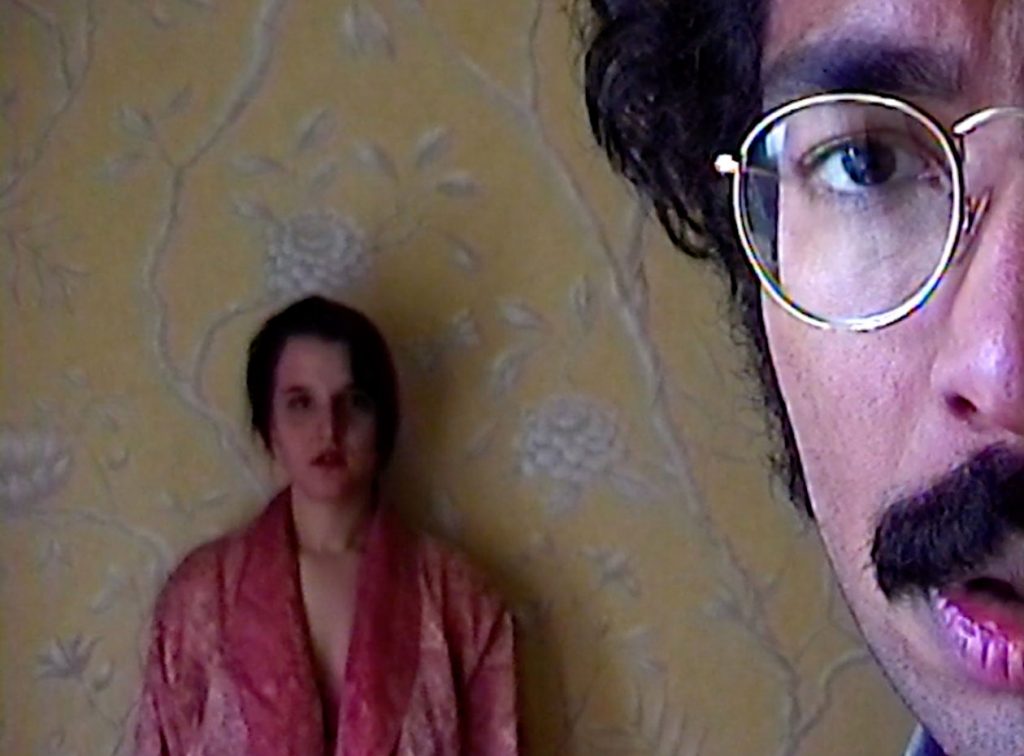
New Strains is a collaborative romantic comedy by Artemis Shaw and Prashanth Kamalakanthan. Shot on a camcorder in a borrowed apartment during the COVID-19 lockdown, the movie captures pandemic cabin fever, hypochondria, and neurosis with a sharp wit and petty humor. The story concerns a fictionalized virus outbreak, a flu which, if contracted, results in significant cognitive decline. There’s a paranoia which ensues that is a bit reminiscent of Ling Ma’s Shen Fever from her 2019 novel Severance, where the affected and their loved ones can’t confirm whether or not they are sick until it is far too late. Due to the outbreak, the entire world shuts down, and couple Talia and Ram, played by the filmmakers, find themselves stuck in Talia’s uncle’s apartment on permanent vacation. What follows is a downward mental spiral for both characters. I’m still unsure whether this is because they’ve succumbed to the disease or if they’ve just driven each other nuts. Whichever the case, this was some of the best art inspired by the pandemic I’ve so far come across.
Naked Acts (Bridgett M. Davis, 1996)
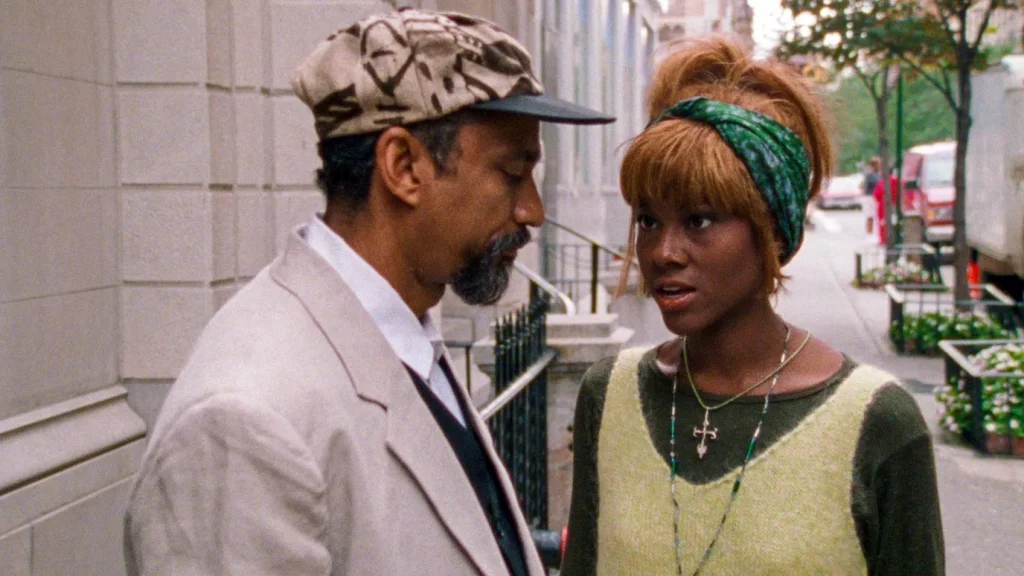
Bridgett M. Davis’ 1996 independent comedy Naked Acts is a treasure. Though it was made almost thirty years ago, the movie has only recently found an audience thanks to conservation efforts by the Black Film Archive and the Lightbox Film Center. Set in New York City, Naked Acts concerns Cecily, an aspiring actress in a lineage of actresses. Her grandmother performed on the stage and her mother, Lydia Love, was a notorious Blaxploitation star. The story mainly hinges on the relationship between Cecily and her mother, as it’s a complex one rooted in trauma and suppression. There are layers upon layers of psychological insight in this dynamic, which inform themes of exoticism, representation, the body, and how they concern the agency of Black women. Aside from her work as a filmmaker, Bridgett M. Davis is a novelist and her ability to tell a story with uncommon character depth is on full display. Naked Acts is an exceptional exercise in taking control of the narrative, particularly in cinema, which has traditionally been kept away from the hands of BIPOC women.
Toute un nuit (Chantal Akerman, 1982)
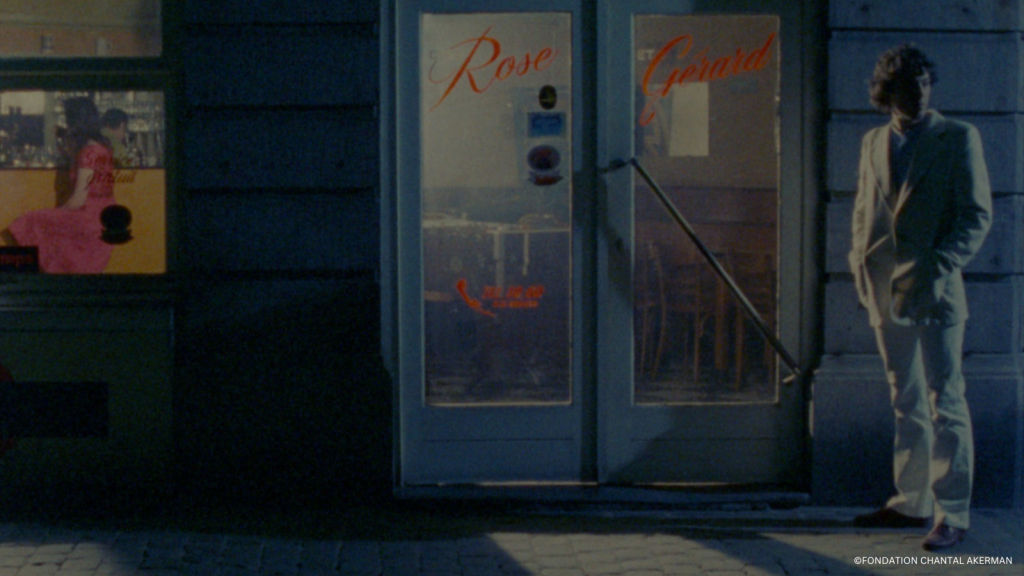
Toute un nuit, much like anything by Akerman, is unlike most movies. There’s no central story or main characters to hold the narrative together. Rather, it’s a bit like a short story anthology which unfolds over a single night in Brussels. Over a dozen lovesick people walk in and out of the frame. Their footsteps clattering everywhere. They weave into a richly textured tapestry of a city. Some of them escape their lives with alcohol. A few spend the empty time bored in bars or cafés. They listen to yearning pop songs on the radio, and sometimes dance to them, both of which fill the dark silence with heart ache. Nothing feels good, and all prospects of love falter as the hours tick by. Night gives way to another morning. The repetitive footsteps are replaced with birdsong and drones of traffic. It’s overall an abstract effort, which provides some key insight into the age-old question: where does everyone go after we fall asleep?
Good One (India Donaldson, 2024)
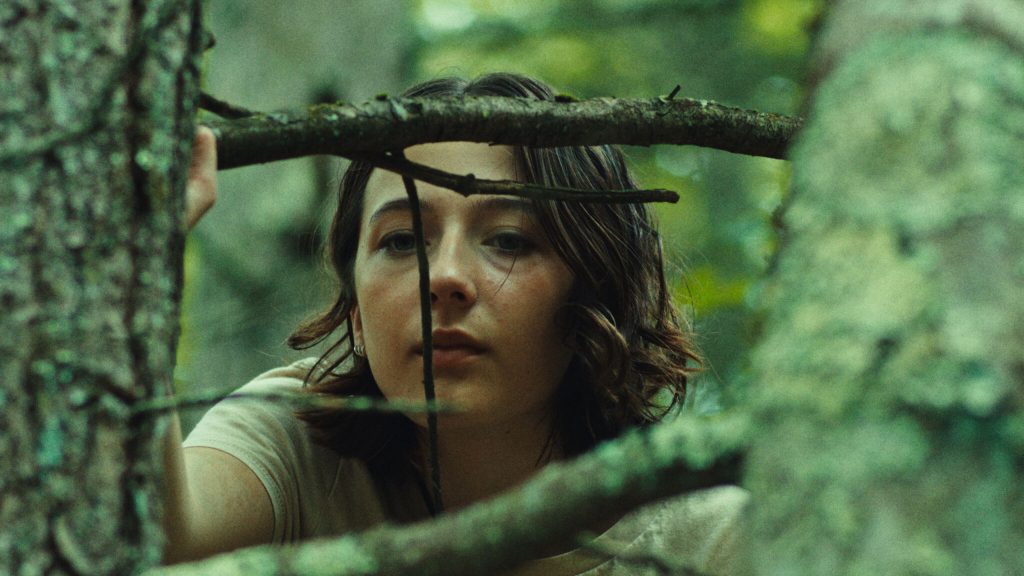
I was lost in India Donaldson’s Sundance darling Good One. It’s a deceptively simple coming-of-age story centered around a teenage girl, Sam, and her relationship with two older men, Chris, her father, and Matt, his best friend. The story is told over a hiking trip in the Catskills, and the images gleaned from upstate New York are full of idyllic, sunburst wilderness. Cutaways to slugs, butterflies, and newts which bathe in natural light on the rich forest floor metaphorically populate the narrative to group together the various players, human and non-human, of the serene ecosystem. An awkward balance takes form as the movie carries on, where Sam is surrounded by sublime beauty but tied together to subtly toxic yet effectively chatty masculinity. She has to play the traditional female roles around their campsite, to clean and cook, but also has to be the grown-up to offer advice and feed impossibly incompetent adults. Eventually this tension breaks with improbable force over a fire, and our young heroine is driven to take charge of herself and this journey. The picturesque feature is magically scored by composer Celia Hollander, and it matches the delightful chromatism of the scenery. Lily Collias as Sam is a revelation. She puts on a quiet performance to carry the weight of the film with the light off her eyes.

